This is going to be a brief review of a book I adore.
I have on my desk Pickup by Lee Friedlander. No, it’s not a book about great lines to use in a bar. It is, instead, a collection of 78 black and white images of an American icon: the pickup truck. This book is a celebration, an homage, a tribute, a dive into something so ubiquitous it’s both obvious and an enigma. And this book is deeply rewarding.
“Pickup” by Lee Friedlander
Published by Steidl, 2022
review by W. Scott Olsen
The book is not romanticized at all. There are no showroom shots of shiny new trucks with lots of options and alluring supermodels. There are no aerial shots of dusty backroads or trucks on their way to some improbable destination. And no one in the book, as far as I can tell, is wearing cowboy boots and chaps and in the process of tossing a horse saddle into the back.
These are trucks in real life, in real settings. They are work trucks, everyday trucks. They are not beautiful. They are necessary.

The American pickup truck has become so much a staple of American life that people buy them because they might need them someday. You feel a bit unprepared without one. And once you have one, the patina becomes a badge of authenticity and merit. Yes, there are pickup trucks in other parts of the world. (The Toyota Hilux is planet-covering, except in the United States.) But you can tell an American pickup truck instantly. Even as a matter of book design, this is so much an American book that the first interior spread is the word “Pickup” and then the author’s name in bold, sans serif, flag-waving red and blue text set against a white background.
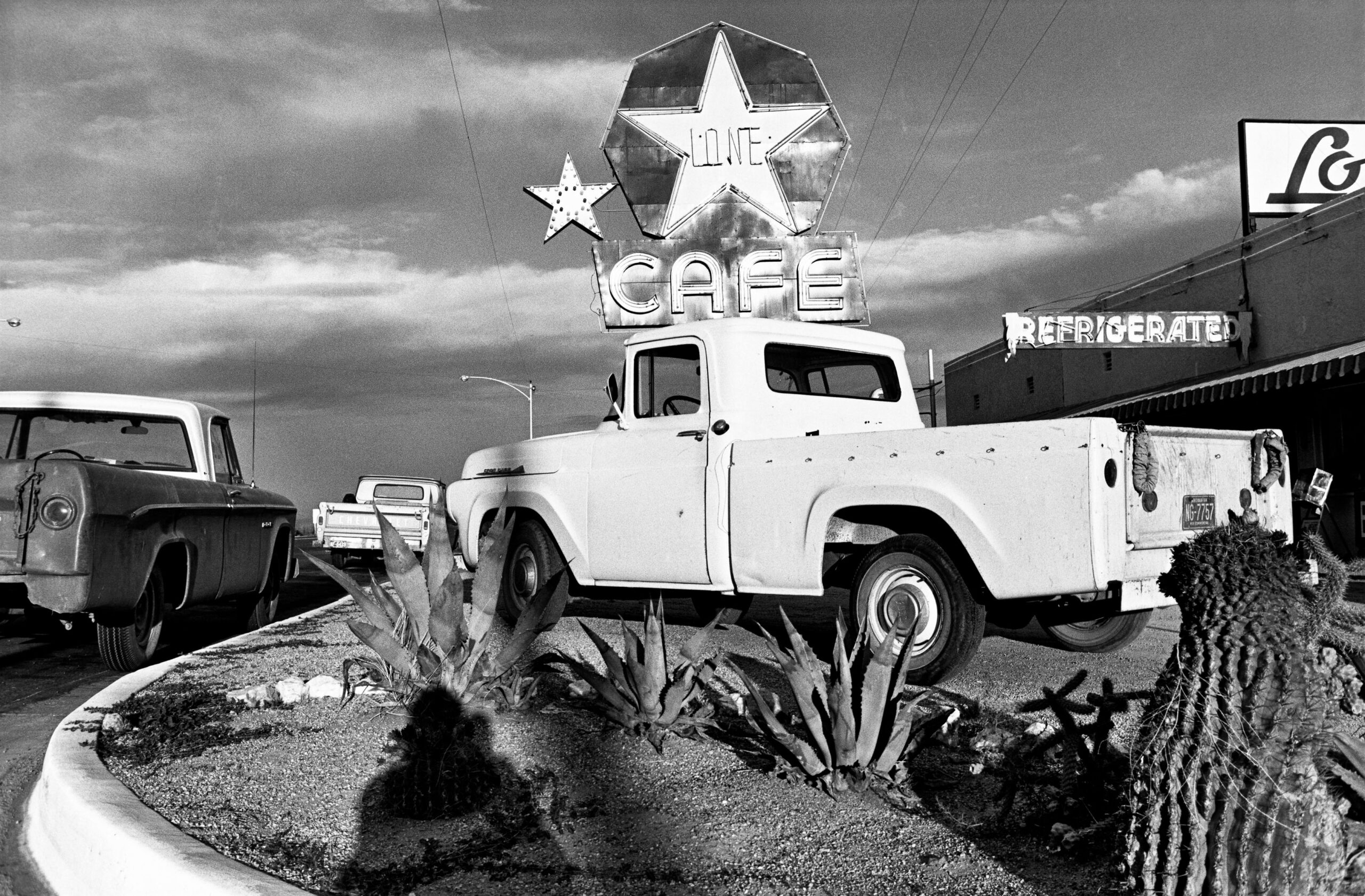
Pickup begins with an opening quote by Patrick White (oddly enough in this context, an Australian novelist), from Riders in the Chariot, which reads,
“Rhea, darling,” he answered rather lightly.
“In the eyes of the world a provincial intellectual is a comic figure.”
And while the book is often wry, it would be wrong to say it’s comic. It is, instead, true.
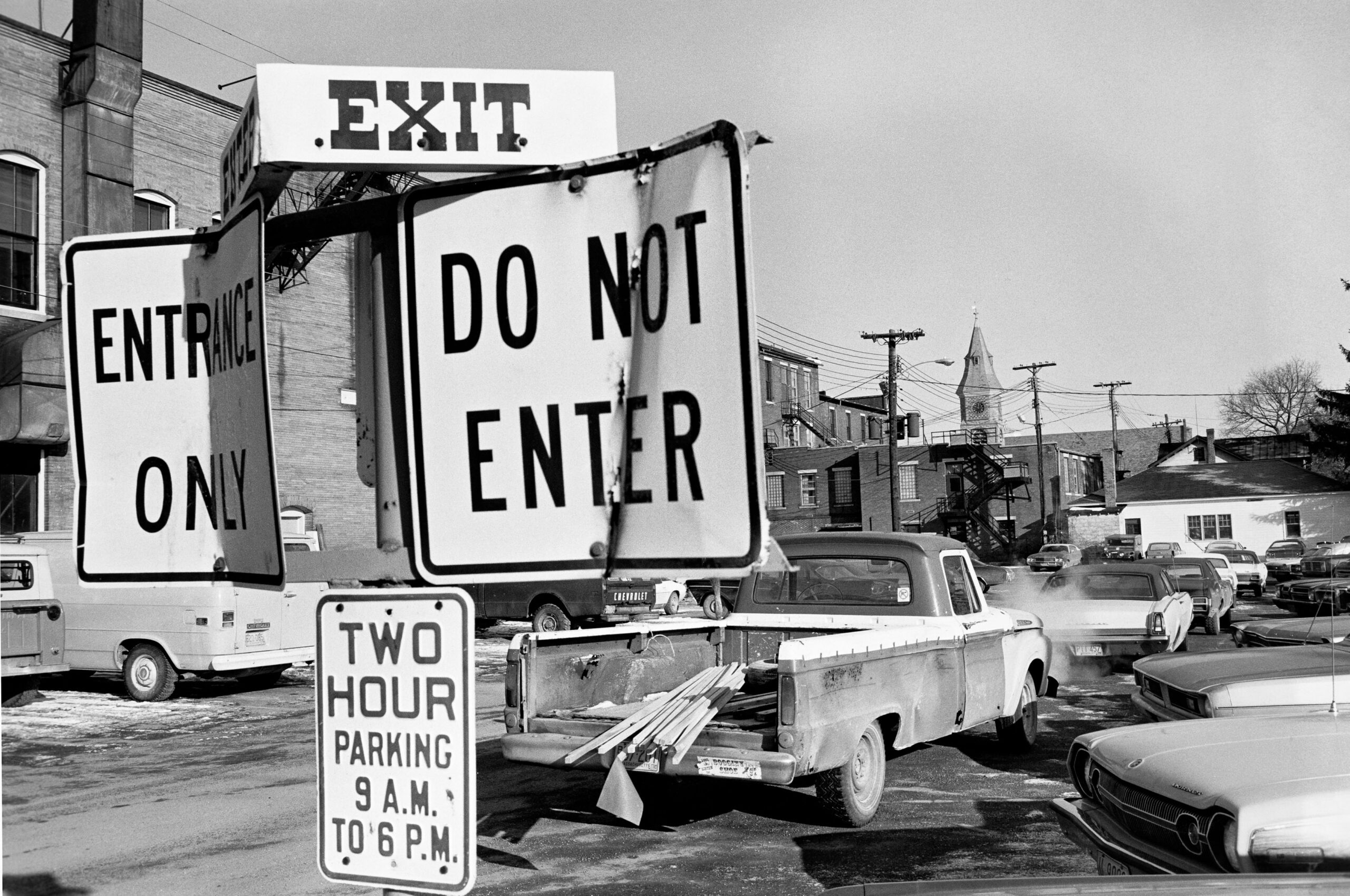
Other than that, however, there is no text in the book whatsoever. The images begin with a man, either sleepy or drunk or stoned, sitting at the wheel of a pickup truck, the camera set improbably on its hood. From there, we get old trucks, rusted trucks, and trucks with dents. And, equally as important, we get trucks in their commonplace, regular, most unglamourous settings, whether it be near old cafes, urban streets, parking lots or backyards.
As the book goes on, we get fewer exteriors and more images of what the pickup trucks are carrying, what’s in their beds. This is where the real fascination with this book comes in. If a pickup truck is meant to carry a load, the implicit question is, what is that load?
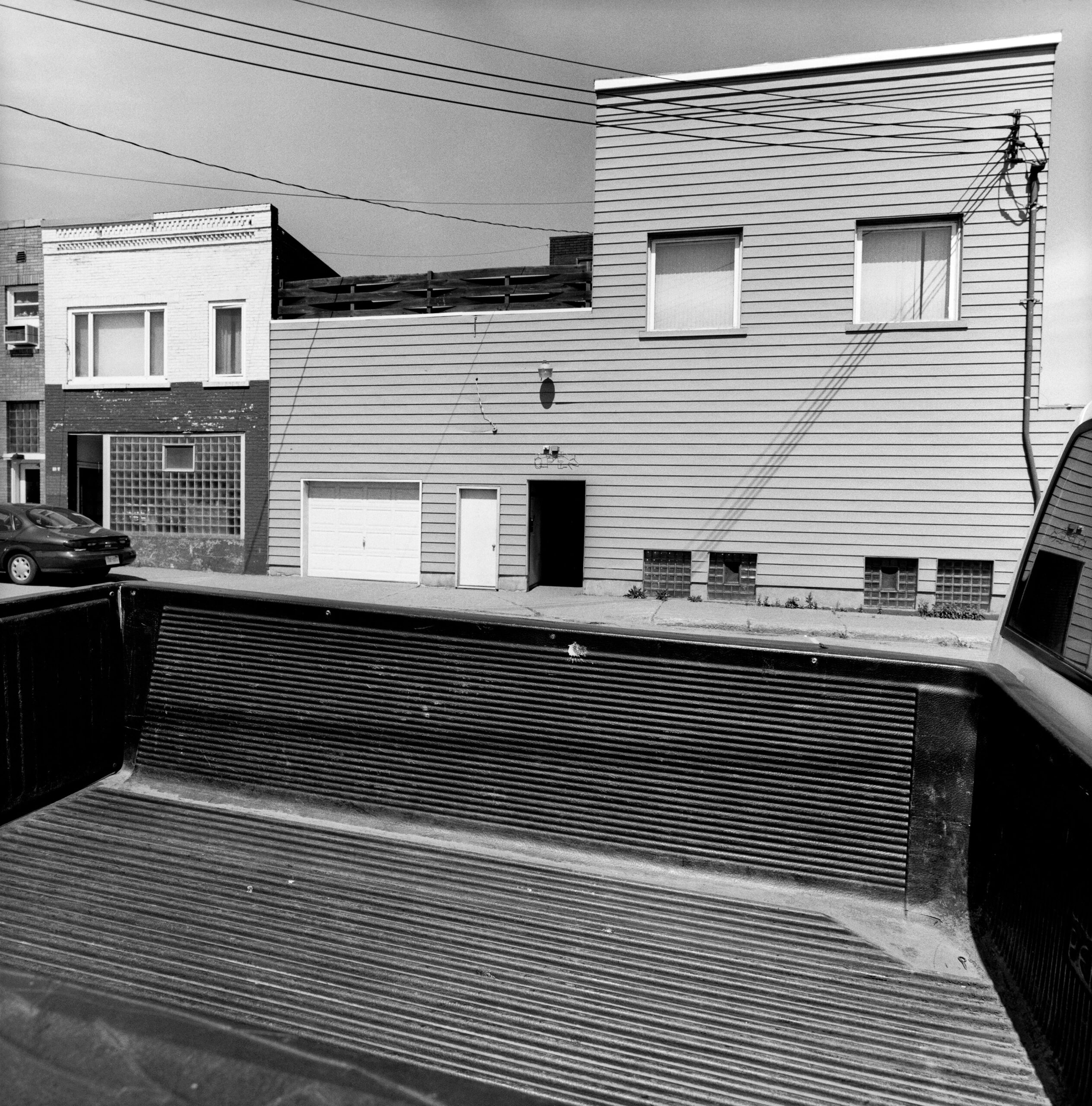
The book rewards this curiosity. The book reveals pickups carrying lumber, dogs, old tires, gas cans, ropes, pipes, a motorcycle, furniture, crushed soda cans, a tiger in a cage, a giant inflatable rat, clowns, paint cans, a ladder, a birdhouse, a toy pistol. One image shows two women in bathing suits standing in a hot tub in a truck’s bed. The truck next to them has a bumper plate that reads “Adult toy.”
There are improbabilities and ironies throughout this book. One shot reveals three riders in the cab of an old Silverado—a man driving, a woman on the passenger side, and a standard poodle sitting upright between them, all three of them gazing forward. Another shot shows a homeless man sleeping on cardboard near where a pickup truck is parked.
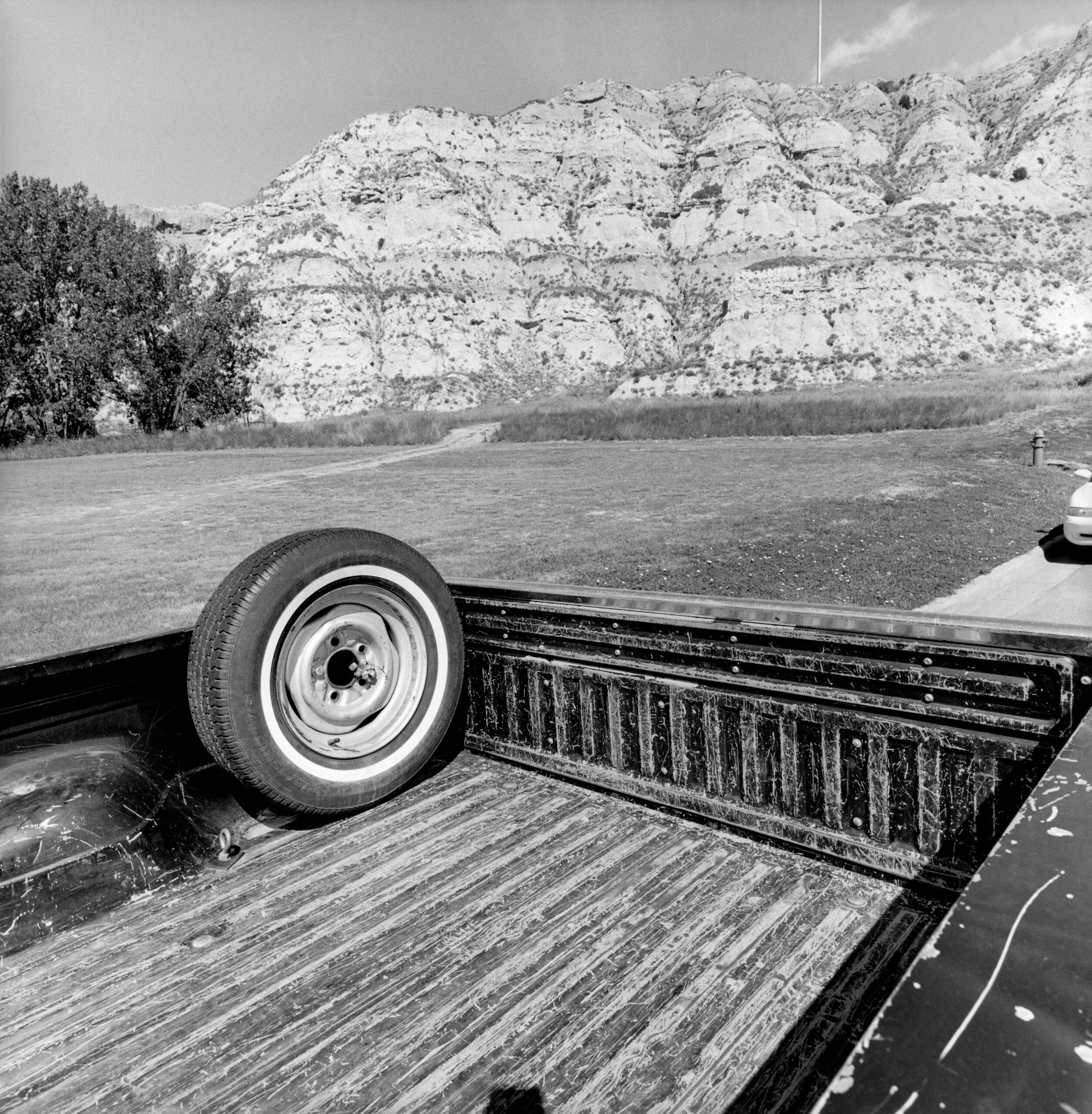
This book is an act of observational genius, excellent photography (the compositions are excellent, the tonality impressive, and all the technical aspects of photography could not be done better), and fine anthropology.
Every page invites you to linger. There is a list at the end of the book that tells where the image was taken and what year, ranging from 1963 up until 2015, but that information is really just a courtesy.
What comes through are the brief flashes of stories which compel us to wonder what in the world is going on here? We examine the contents of the back of a pickup truck the way an archaeologist 100 years in the future may wonder who the hell we are.
Lee Friedlander’s book Pickup is, if you’ll forgive the pun, a book to pick up. Once you do and hold it in your lap, you’ll find yourself slowing down and examining every page happily and curiously.
If you have a pickup truck in your own garage, you will recognize the bond of family here.
If you don’t, you may wonder why not.
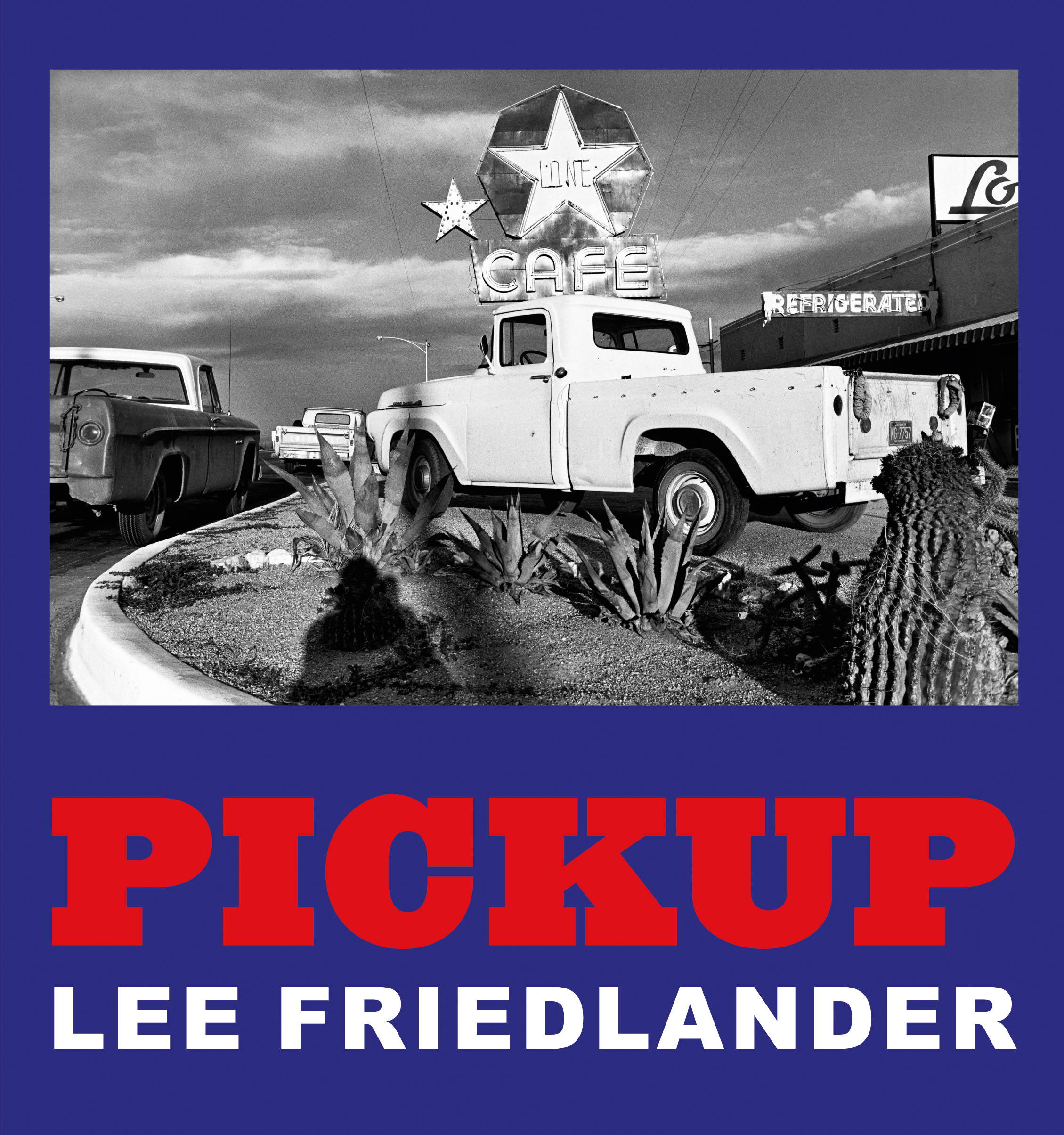
A note from FRAMES: Please let us know if you have a forthcoming or recently published photography book.




